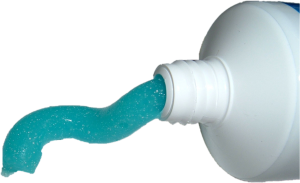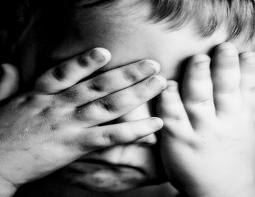 About 2 percent of children in the U.S. are being raised by their grandparents with no parent living in the home, according to the U.S. Census bureau. But what do we know about these families? And do grandparents face any particular parenting challenges that differ from more traditional households? [Read more…]
About 2 percent of children in the U.S. are being raised by their grandparents with no parent living in the home, according to the U.S. Census bureau. But what do we know about these families? And do grandparents face any particular parenting challenges that differ from more traditional households? [Read more…]
Evaluating programs to promote teen sexual health
 Teenagers and young adults represent only 25 percent of the sexually active population in the U.S., but they acquire nearly half of all new sexually transmitted infections, according to the U.S. Centers for Disease Control. [Read more…]
Teenagers and young adults represent only 25 percent of the sexually active population in the U.S., but they acquire nearly half of all new sexually transmitted infections, according to the U.S. Centers for Disease Control. [Read more…]
The serious effects of physical discipline
There are many factors that influence how parents discipline their children: parents’ own upbringing, family customs and stress levels all factor in. But there is clear evidence that some forms of discipline – specifically physical punishment – have negative effects on children throughout their lives.
A new systematic review reveals a body of evidence demonstrating physical punishment may increase the chances of antisocial behavior and aggression, depression, anxiety, drug abuse and psychological problems later in life.
The review is especially interesting because it discusses intervention programs designed to reduce physical punishment and child abuse. It included a trial of one intervention that taught parents to reduce their use of physical punishment, which led to less difficult behavior by their children.
Another such program – called Triple P – originated in Australia was tested in a study funded by the U.S. Centers for Disease Control. The program uses a broad range of strategies to address physical abuse including consultations with parents, public seminars and public service announcements on local media. It led to significantly positive results that are encouraging if replicated in other areas of the U.S. Counties that implemented the program had lower rates of substantiated child abuse cases, fewer instances of children removed from their homes and reductions in hospitalizations and emergency room visits for child injuries.
John Eckenrode, professor of human development and director of Cornell’s Bronfenbrenner Center for Translational Research, is an expert in child abuse and maltreatment. He’s written a chapter about preventing child abuse in the book Violence against women and children, published by the American Psychological Association.
“We know that there are tested and effective ways to support parents so that they can better provide a safe and supportive environment for their children without resorting to physical punishment,” he said. “But we must get the word out, provide those who interact with parents such as teachers and physicians with the tools they need to promote positive parenting strategies, and provide resources to states and localities to scale-up effective programs.”
The take-home message: Physical punishment and child abuse are serious problems that have life-long effects. But there is a growing body of evidence that intervention programs can help guide parents to other methods of discipline.
New evidence on fluoride
 Since I was a child, I have always considered fluoride a good thing for preventing tooth decay. I’ve always taken regular trips to the dentist, brushed with a fluoride toothpaste and generally taken good care of my teeth. So I was surprised last week to see a new review raising some questions about the safety of fluoride consumption.
Since I was a child, I have always considered fluoride a good thing for preventing tooth decay. I’ve always taken regular trips to the dentist, brushed with a fluoride toothpaste and generally taken good care of my teeth. So I was surprised last week to see a new review raising some questions about the safety of fluoride consumption.
The report – written by Harvard researchers and funded by the National Institute of Public Health – reviewed 27 studies published over a period of 22 years that looked into whether fluoride damaged the nervous systems of people. The studies included measured exposure to fluoride in drinking water related to cognitive function tests and IQ scores.
The researchers found that children living in areas where fluoride is added to the water score lower on IQ and cognitive tests compared with children living in areas where fluoride is not added to the water. The conclude that fluoride may be a developmental neurotoxicant for children that affects brain development at exposures much below those that can cause toxicity in adults.
What surprised me the most is that 70 percent of U.S. households live in communities where fluoride is added to the water. That’s millions of Americans ingesting an additive that has unclear long-term effects.
The report also calls for additional studies to evaluate dose-response relationship of fluoride – basically how much is needed to prevent cavities without causing harmful side effects
I feel lucky that my community does not add fluoride to our water supply. And I have to admit – since reviewing this new report – I’ve been much more careful about limiting the amount of toothpaste on my children’s brushes each day.
The consequences of child abuse and neglect
 Here at EBL, we’ve written before about the horrible consequences of child abuse and neglect. The statement we made before remains true: No one needs an academic study to understand that abuse and neglect take a terrible toll on young people, their families, and our society. But it is helpful to understand the specific effects this behavior causes.
Here at EBL, we’ve written before about the horrible consequences of child abuse and neglect. The statement we made before remains true: No one needs an academic study to understand that abuse and neglect take a terrible toll on young people, their families, and our society. But it is helpful to understand the specific effects this behavior causes.
A new systematic review examines the long term impacts of physical abuse, emotional abuse, and neglect in childhood on later mental and physical health. The review synthesized data from 124 studies that followed victims of child maltreatment later in life.
The findings demonstrate significant associations between physical abuse, emotional abuse, and neglect with mental health conditions including depression, anxiety, and suicide attempts. The researchers estimate that all three forms of maltreatment double the risk of developing a mental health disorder later in life.
Adults who were victims of child maltreatment were also more likely to use drugs, to engage in risky sexual behavior, and to contract sexually transmitted infections. Additionally, research has found a possible relationship with chronic diseases and other physical health outcomes, but the evidence is sparse and not consistent across types of maltreatment. The authors said more research is needed to better understand these consequences.
At Cornell’s College of Human Ecology, researchers manage a project called the National Data Archive on Child Abuse and Neglect (NDACAN). The project, which is housed in the Bronfenbrenner Center for Translational Research, makes existing child maltreatment data available to qualified researchers so that they can conduct their own original research and learn more about the costs, consequences, and prevention of child maltreatment. Datasets at NDACAN include large-scale surveys and annual federal efforts collect data from official child abuse and neglect reports and about maltreated children living in foster care.
“The Archive is an important tool that allows social scientists to replicate and expand on our scientific knowledge base,” said Elliott Smith, Associate Director of NDACAN.
The take home message: All forms of child abuse and neglect have serious ramifications that last throughout the life-span.
The evidence shows preschool matters!
 We have heard educators and politicians alike tout the virtues of early childhood education, and how it prepares kids for a lifetime of learning. With one of my own children in preschool and another one headed there shortly, I’m always interested in the evidence on this stage learning. Do activities like playing with blocks and paints, sitting through circle time and learning to share really impact a child for the rest of his life?
We have heard educators and politicians alike tout the virtues of early childhood education, and how it prepares kids for a lifetime of learning. With one of my own children in preschool and another one headed there shortly, I’m always interested in the evidence on this stage learning. Do activities like playing with blocks and paints, sitting through circle time and learning to share really impact a child for the rest of his life?
So I was fascinated to follow a series of reports on National Public Radio that detail some interesting evidence about preschool programs. While these reports didn’t include a systematic review, they did include several different longitudinal studies that make an interesting case about the importance of preschool.
On the show This American Life, host Ira Glass talks with a range of experts – a journalist, an Nobel-prize winning economist and a pediatrician – about the evidence on what researchers call “non-cognitive skills” like self-discipline, curiosity and paying attention.
One of the leading experts in this field is an economist at the University of Chicago named James Heckman. His work has found that these soft skills are essential in succeeding in school, securing a good job, and even building a successful marriage. Heckman found that children learn these skills in preschool.
One well-known longitudinal study followed a group of low-income 3- and 4-year-olds in Ypsilanti, MichiganThese children were randomly assigned to attend preschool five days a week, or not attend any preschool. After preschool, all of the children went to the Ypsilanti public school system.
The study found that children who attend preschool were more successful adults. They were half as likely to be arrested and earned 50 percent more in salary. Girls who attended preschool were 50 percent more likely to have a savings account and 20 percent more likely to have a car.
Another similar project conducted in North Carolina found that comparable results: Individuals who had attended preschool as children were four times more likely to have earned college degrees, less likely to use public assistance, and more likely to delay child-bearing.
There is more evidence too. NPR’s Planet Money aired a show earlier this year demonstrating further evidence about the benefits of preschool. And researchers at the University of Texas in Austin found that preschool reduces the inequalities in early academic achievement.
The take-home message seems to be: Preschool matters!
What we know about autism therapies
 According to the U.S. Centers for Disease Control and Prevention, one in 88 American children have an autism spectrum disorder – developmental disabilities characterized by delays in social interaction and communication, cognitive difficulties and repetitive behaviors.
According to the U.S. Centers for Disease Control and Prevention, one in 88 American children have an autism spectrum disorder – developmental disabilities characterized by delays in social interaction and communication, cognitive difficulties and repetitive behaviors.
Autism appears in children by three years of age and typical treatments include medicine and therapy. Now there’s a new meta-analysis investigating behavioral interventions to treat autistic children.
The analysis looks at 33 systematic reviews and 68 intervention studies of autistic children. The review – published earlier this month in the journal Pediatrics – found that some intervention programs did help improve behavioral symptoms.
Intensive behavior programs – which include therapy for at least 25 hours a week – were found to be moderately effective at improving core deficits such as adapting to change, decision-making and memory. The evidence showed these programs were particularly effective when they began shortly after diagnosis, and when they address the concerns of the family and offer opportunities for them to participate.
The authors agreed that there is plenty of room for improvement. They suggested that comprehensive therapy programs need to address even more deficits including social communication, language, play skills, aggression and preoccupation with rituals.
They also identified gaps in our knowledge about autism therapies. Researchers need to
– Develop uniform outcome measures so that future systematic reviews can more easily pool data.
– Conduct more studies on pre-verbal or non-verbal children to determine the interventions that help them best.
– Assess how individual, specific therapies impact core deficits such as IQ and communication skills.
– Collect more evidence to determine the most effective dose and duration of therapies.
All in all, the take home message is that behavioral therapy does help children diagnosed with autism, but that researchers have a long way to go to ensure that interventions are doing all that they can to help autistic children develop and thrive.
New evidence on smoking and pregnancy
 It’s no secret that smoking is bad for your health – and, for pregnant women, has serious impacts on the health of their unborn babies. Smoking during pregnancy not only increases the chance for early labor and miscarriage , but also lowers the unborn baby’s heart rate, limits the oxygen he receives, , and increases his risk of lung disease later in life.
It’s no secret that smoking is bad for your health – and, for pregnant women, has serious impacts on the health of their unborn babies. Smoking during pregnancy not only increases the chance for early labor and miscarriage , but also lowers the unborn baby’s heart rate, limits the oxygen he receives, , and increases his risk of lung disease later in life.
Now there is new evidence that provides pregnant mothers with one more reason to avoid smoking: A new systematic review published in the British Medical Journal found that children whose mothers smoked during pregnancy were more likely to be overweight.
The analysis reviewed a total of 30 prospective studies to identify factors during pregnancy and infancy that led to obesity in childhood. Children whose mothers smoked during pregnancy were 47% more likely to be obese.
The review also found that children were significantly more likely to be overweight if their mothers were overweight before giving birth, or if they were fed solids before they were 4 months old.
There were also some factors that seemed to protect against childhood obesity. Breastfed babies were 15 percent less likely to be overweight in childhood. Babies who gained weight more slowly during infancy were also significantly less likely to become overweight as children.
The review offers some solid guidelines for mothers during pregnancy and while caring for young infants. The authors also noted medical professionals could use the findings to develop screening guidelines for pregnant mothers and young babies.
The bottom line: Nutrition and health during pregnancy and infancy has an important impact on a child’s health and well-being.
Dads influence teen sexual behavior
 Here at EBL, we’ve written before about why teenagers are more likely to make risky decisions compared to adults – including engaging in risky sexual activity. But we also know that parents can influence their teens’ decisions about sex—and we’re not just talking about a mom sitting down with a teen for “the talk.”
Here at EBL, we’ve written before about why teenagers are more likely to make risky decisions compared to adults – including engaging in risky sexual activity. But we also know that parents can influence their teens’ decisions about sex—and we’re not just talking about a mom sitting down with a teen for “the talk.”
A new systematic review in the journal Pediatrics found evidence that dads have a unique influence on the sexual behavior of their adolescent children, independent of the mother’s impact.
For their analysis, researchers found 13 studies published between 1980 and 2011 that investigated fathers’ influence on sexual risk-taking for youth ages 11 to 18. They used a sweeping definition of fathers that included stepfathers, adoptive fathers and other men who acted as the primary male caregiver to teens.
What did they find? Fathers (and father figures) matter. The emotional quality of the father-child relationship makes a difference: teens who considered themselves close to their fathers tended to begin having sex later. When fathers are communicative about sex, their children are more likely to make healthy decisions. Fathers’ attitudes matter too: when dads approved of adolescent sexual activity, teens tended to start having sex earlier compared with teens whose dads did not approve.
Maybe the most interesting findings dealt with parenting style: teens with either overly restrictive or overly lenient fathers tended to have sex earlier than teens with dads who found a more balanced approach.
The take home message? Dads and male adults who act as father figures should communicate with teens about their expectations and rules surrounding sexual behavior. And though it may be hard as teens become more independent, keeping a close, positive relationship helps keep adolescent children healthy.
Do exercise programs for kids really work?
 Nearly 12.5 million children – or 17 percent of the U.S. population ages 2-19 – are obese. As a response to this growing problem, schools and community groups have launched intervention programs designed to get kids moving. But do they work?
Nearly 12.5 million children – or 17 percent of the U.S. population ages 2-19 – are obese. As a response to this growing problem, schools and community groups have launched intervention programs designed to get kids moving. But do they work?
A new meta analysis published last month in the British Medical Journal was designed to answer just that question. It included 30 studies on exercise programs for children published worldwide between January 1990 and March 2012.
Studies in the review measured the effects of intervention programs that targeted children under 16 years old and lasted for at least four weeks. To be included, studies had to definitively measure levels of physical activity in children throughout the day – not just during the intervention class period – with devices like motion sensors.
In each case, the investigators expected that the programs would increase the children’s overall daily physical activity.
The review uncovered some surprising evidence: programs designed to encourage increased physical activity among kids didn’t work. On the whole, the programs increased children’s overall physical activity levels by about 4 minutes a day – even though the programs themselves ranged from 30 to 90 minutes in length.
One explanation is that children unconsciously compensate for the energy they use during structured activity programs by being doing sedentary activities aftewards, Brad Metcalf, a research fellow and medical statistician at Peninsula College who led the review, told the New York Times. Another explanation is that many of the programs took place after school, replacing a time period when children are typically most active anyway.
This analysis did yield some clear results: that we need to come up with additional strategies for encouraging physical activity among children.


